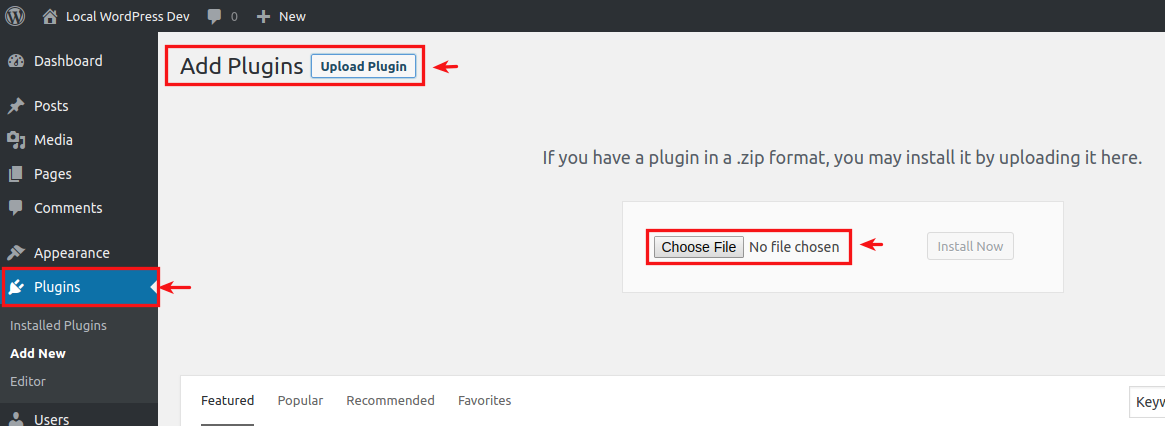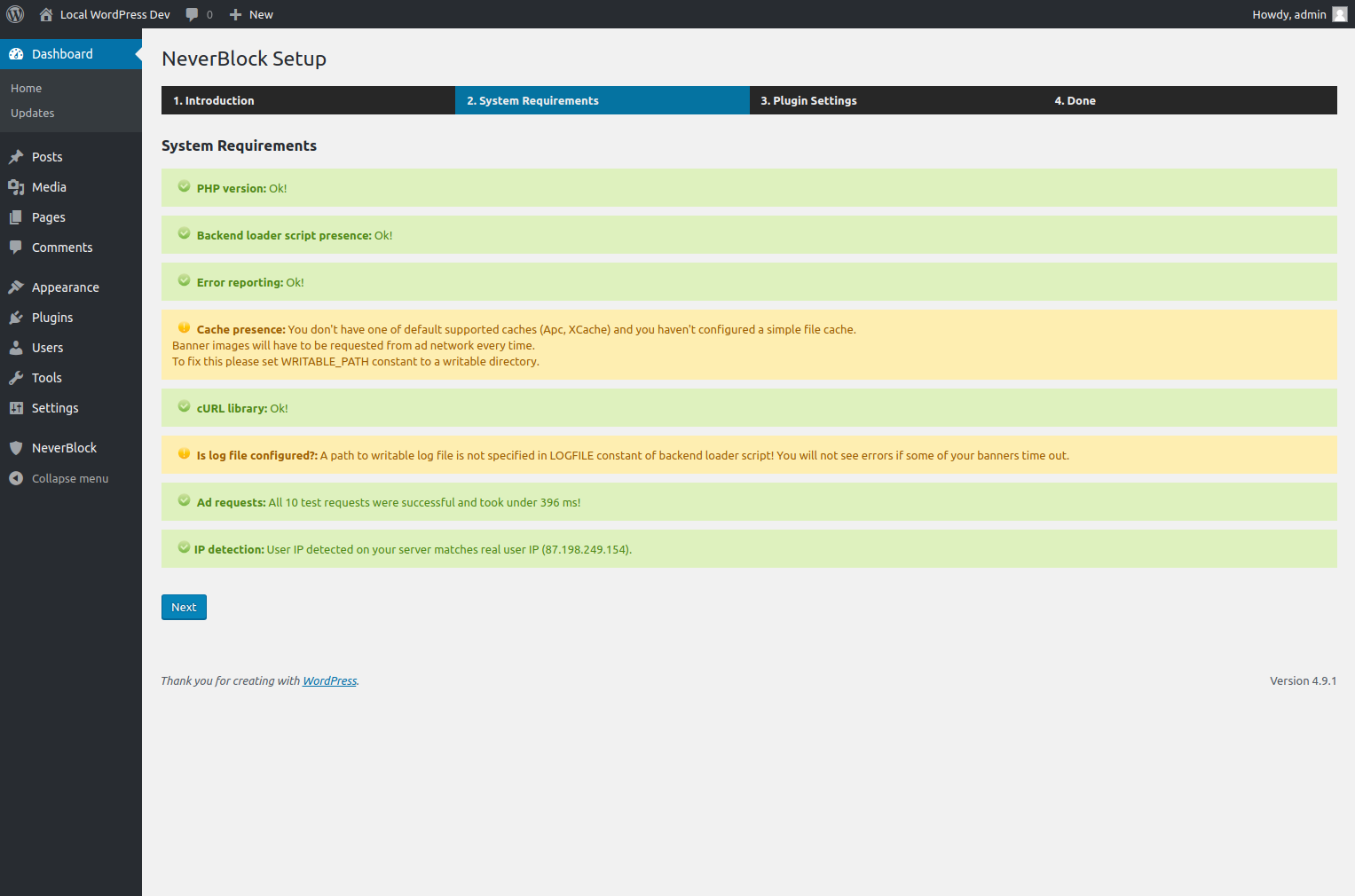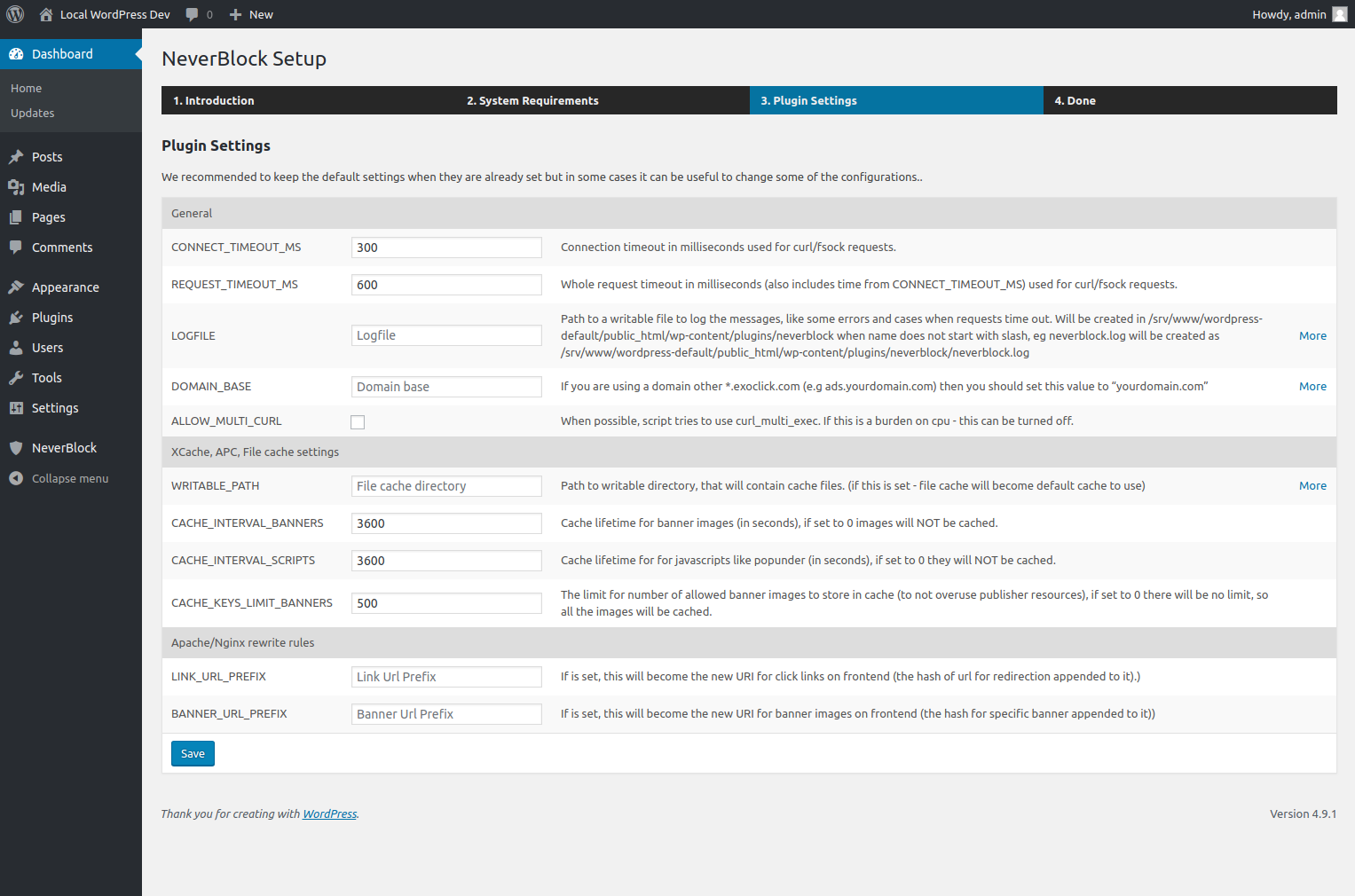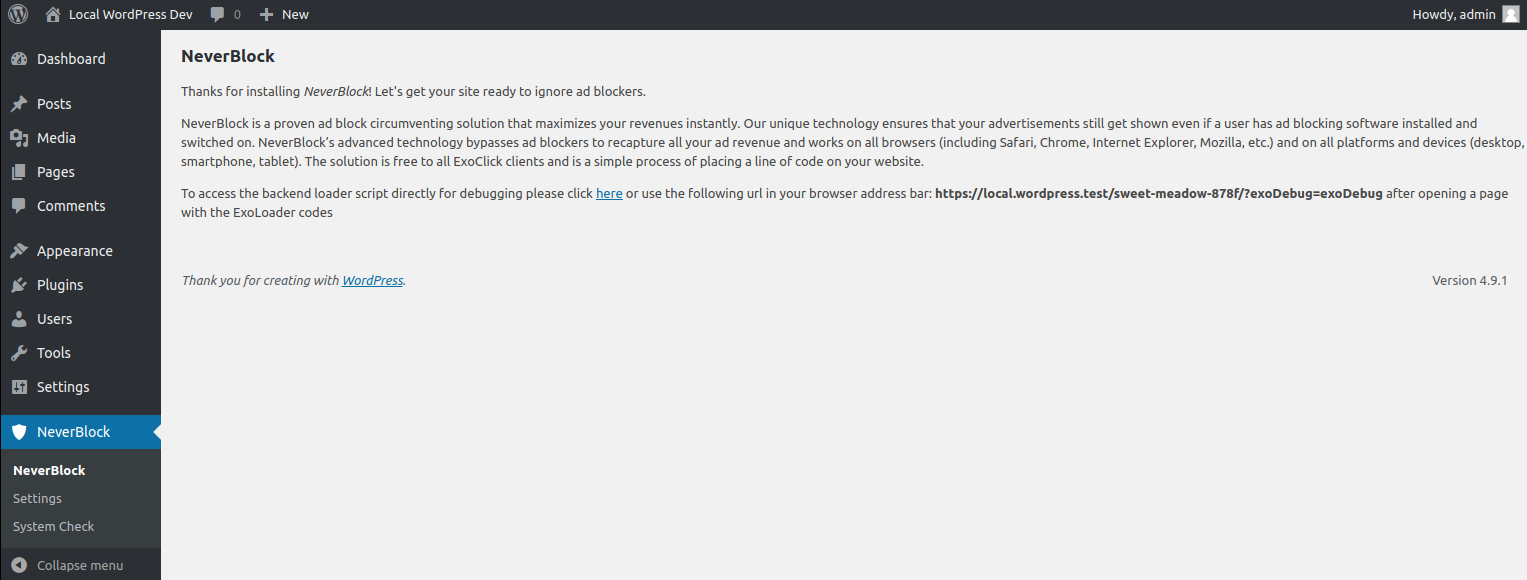WordPress Plugin
Installation
The plugin can be downloaded using the following link:
Installing the NeverBlock plugin for WordPress is no different to any other plugin. In the menu select Plugins -> Upload Plugin -> select the NeverBlock plugin to install.

Step 1 - Introduction
The first page of the installation wizard will not require any input.
Step 2 - System Requirements
In this step we will see the results of tests on the configuration. The results that you see may vary depending on your setup.

For more details regarding each of these tests, the results, and running manually see these sections: Run the diag.php and Possible diag.php results.
Step 3 - Plugin Settings
In the configuration section of NeverBlock PHP there is a section on Configuring Constants. Step 3 of the installation wizard allows you to configure these settings. Details on each of these settings is covered in the related section, and is also described in the screenshot below.

These configurations can be changed at any point after installation.
Step 4 - Done
Once installation is complete you will see the NeverBlock option in your menu. Here we can choose to change the plugin settings when needed:

Adding zones
There are two ways in which NeverBlock zones can be added to your WordPress page.
Shortcodes
In TinyMCE, when creating/editing a post just add it as follows, ensuring that you use the correct idzone:
[neverblock idzone=123456]
Alternatively, use the following as an example for a theme template
<?php echo do_shortcode('[neverblock idzone=123456]') ?>
Note that there is an optional ‘container_id’ attribute that can be used to reference an id of a DOM node. This will append it to the related div. The div has to be present before the shortcode for this to work otherwise NeverBlock will not find the element.
<div id="my-ad-container-id"></div>
[neverblock idzone=123456 container_id="my-ad-container-id"]
Regular scripts
When editing a theme template you can use the standard scripts outlined in Displaying Ads.
-v1.12-blue.svg)